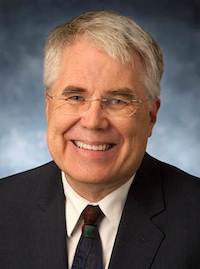Discussing the Modified New Case History Portfolio Exam Requirements With ABE President Asgeir Sigurdsson
 We recently discussed with ABE President Dr. Asgeir Sigurdsson the modification to the Case History Portfolio Exam and how the change came about.
We recently discussed with ABE President Dr. Asgeir Sigurdsson the modification to the Case History Portfolio Exam and how the change came about.
AAE: How did the decision come about to modify the Case History Portfolio Exam to a standard grouping of five cases treated and documented by each candidate, rather than 10 cases?
Dr. Asgeir Sigurdsson: The Board is always looking to enhance the Board certification process. At this time, the cases remain the greatest, and often final, hurdle to Board certification.
After careful review, it was determined that the elimination of the Diagnostic, Emergency, and Other categories was appropriate due to the high variability between candidates in these categories. It was expressed that the less common diagnoses and procedures can be more adequately addressed in a standardized fashion during the Oral Examination. This was further supported by a careful statistical analysis of Case Portfolio submissions with and without these categories.
The Board hopes that these changes will encourage those candidates currently in the process to submit their case portfolios in a timely manner, as well as encouraging current AAE members who are not board certified to initiate the process.
AAE: Naturally, we assume this change will help the AAE increase its percentage of Board-certified members. How quickly do you hope to see an acceleration in the percentage of our Board-certified members? No need to give an actual target percentage number, but if you do have a goalpost in mind, feel free to share that number.
Dr. Sigurdsson: Just 10 years ago, less than 20% of AAE members were Diplomates. Since then other improvements to the board examination process have made positive gains in the number of members challenging the exams, to include a record breaking 150 Diplomates eligible for recognition at the 2019 Grossman ceremony. Currently however, only about 33% of AAE members are Diplomates, which places us as having one of, if not the, lowest overall percentages of Board-certified members of the dental specialties, which does neither reflect well on us nor our specialty.
The hope is that the 300-plus candidates who have already have passed the Written and Oral exam will now move quickly to complete the final step of their board certification process. This alone will increase the numbers of Diplomates. Our hope is that eventually the numbers of Diplomates being pinned each year will reflect the number of new graduates, as well as capitalizing on those current practitioners that will join the process.
AAE: Why is now the right time to modify the requirements?
Dr. Sigurdsson: The timing is always right to review and enhance the process. The Board has made many changes over the years all with the ultimate goal of improving the process to board certification. The Board will continue to strive for improvements and enhancements of the board certification process. We also will continue to encourage AAE members to become Diplomates of the American Board of Endodontics, especially in the light of upcoming ADA re-recognition of the specialty.
AAE: How will this modification help strengthen the relationship between the AAE and ABE, and, ultimately, how does it help advance our specialty in the years to come?
Dr. Sigurdsson: The relationship between AAE and ABE has always been strong and continued enhancements will only serve to strengthen that relationship. Increasing the numbers of Board-certified endodontists will greatly assist with our continued specialty recognition. This number of Board-certified endodontists is important because a component of our continued recognition as a dental specialty by the ADA is to “…provide periodically to the National Commission on Recognition of Dental Specialties and Certifying Boards evidence of its examination and certification of a significant number of additional dentists…” Therefore, it is crucial for the specialty and AAE to increase the number of Diplomates within the membership.




